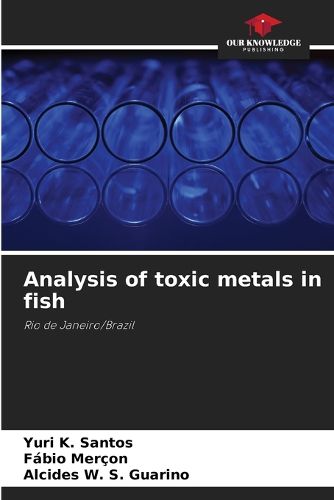Readings Newsletter
Become a Readings Member to make your shopping experience even easier.
Sign in or sign up for free!
You’re not far away from qualifying for FREE standard shipping within Australia
You’ve qualified for FREE standard shipping within Australia
The cart is loading…






This title is printed to order. This book may have been self-published. If so, we cannot guarantee the quality of the content. In the main most books will have gone through the editing process however some may not. We therefore suggest that you be aware of this before ordering this book. If in doubt check either the author or publisher’s details as we are unable to accept any returns unless they are faulty. Please contact us if you have any questions.
Trace elements are continuously discharged into rivers, a fact that causes serious problems due to their toxicity, long persistence, bioaccumulation and biomagnification in the food chain. The Tijuca-Jacarepagua-Marapendi lagoon system receives a huge input of nutrients and pollutants due to anthropogenic impacts on its rivers. The main objective of this study was to evaluate the levels of copper, zinc, lead and aluminum in muscle and viscera of the species Sardinella brasiliensis (sardine), which inhabits the outlet of the Sernambetiba Canal, Barra da Tijuca, Rio de Janeiro (RJ). Among the samples, 56.8% showed values above the limit established for human consumption by Brazilian legislation for lead. The trace elements showed different accumulation trends depending on the location (muscle or viscera). The concentrations of metals in muscle were lower than in viscera. The values found should serve as a warning of contamination of the Sardinella brasiliensis population that inhabits the outlet of the Sernambetiba canal. It was concluded that the concentration of lead in the fish was above the limits permitted for human consumption, and that the region is impacted.
$9.00 standard shipping within Australia
FREE standard shipping within Australia for orders over $100.00
Express & International shipping calculated at checkout
This title is printed to order. This book may have been self-published. If so, we cannot guarantee the quality of the content. In the main most books will have gone through the editing process however some may not. We therefore suggest that you be aware of this before ordering this book. If in doubt check either the author or publisher’s details as we are unable to accept any returns unless they are faulty. Please contact us if you have any questions.
Trace elements are continuously discharged into rivers, a fact that causes serious problems due to their toxicity, long persistence, bioaccumulation and biomagnification in the food chain. The Tijuca-Jacarepagua-Marapendi lagoon system receives a huge input of nutrients and pollutants due to anthropogenic impacts on its rivers. The main objective of this study was to evaluate the levels of copper, zinc, lead and aluminum in muscle and viscera of the species Sardinella brasiliensis (sardine), which inhabits the outlet of the Sernambetiba Canal, Barra da Tijuca, Rio de Janeiro (RJ). Among the samples, 56.8% showed values above the limit established for human consumption by Brazilian legislation for lead. The trace elements showed different accumulation trends depending on the location (muscle or viscera). The concentrations of metals in muscle were lower than in viscera. The values found should serve as a warning of contamination of the Sardinella brasiliensis population that inhabits the outlet of the Sernambetiba canal. It was concluded that the concentration of lead in the fish was above the limits permitted for human consumption, and that the region is impacted.